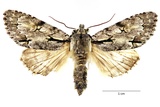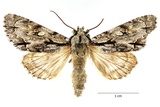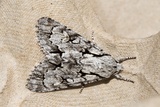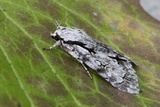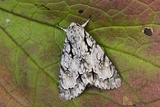Acronicta cuspis (Hübner, 1813) Species
Last modified: June 25, 2025, 11:26 a.m.
An extremely rare, local, and declining species in Belgium with scattered observations. In the southern part of the country small populations still exist.
Data Deficient due to a lack of sufficient data according to the IUCN Red List category for Flanders 2023.
Details
- Classification
- Family: Noctuidae > Subfamily: Acronictinae > Genus: Acronicta > Subgenus: Triaena > Species: Acronicta cuspis
- Vernacular names
- Grote drietand (NL), Large Dagger (EN), La Cuspide, le Javelot (FR), Erlen-Pfeileule (DE)
- First mention in Belgium
- De Sélys-Longchamps E. 1844. Énumération des insectes Lépidoptères de la Belgique. — Mémoires de la Société royale des Sciences de Liége 2: 1–35. On page 10 (as Acronycta cuspis H.). view page
- Status
-
Native
Distribution
Imago
Wingspan 35–41 mm.
Adults of Acronicta cuspis, Acronicta tridens and Acronicta psi cannot be safely distinguished from each other, except by reference of the genitalia. Although larvae of these species are quite different and are easy to identify as species.
Caterpillar
From June till October.
Bionomics
The species hibernates as a pupa.
The adults come to light and sugar.
Flight periods
The adults fly in two generations a year from mid-May to mid-August.
Observed on
- Host plant (species):
- Sorbus aucuparia
- Host plant (genera):
- Alnus and Betula
- Substrates:
- Deciduous trees
The larva lives on several deciduous tree species, like Alnus, Betula, and Sorbus aucuparia.
